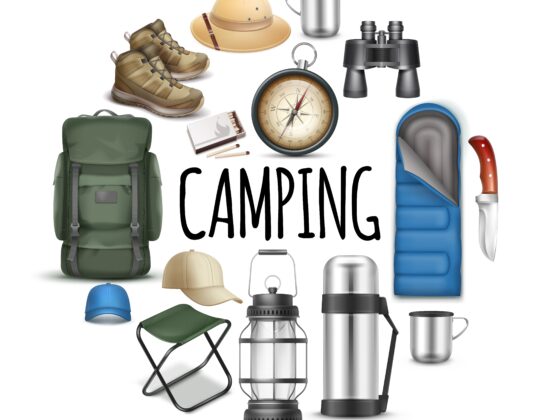Avid outdoor enthusiasts and seasoned campers understand the significance of selecting the right campsite for a successful and enjoyable camping experience.
From the terrain and weather to safety and convenience, every aspect plays a crucial role in determining the suitability of a campsite. This comprehensive guide will share valuable tips and insights on choosing the perfect campsite, along with essential tools and equipment for a memorable outdoor adventure in the Philippines.
Researching the Best Camping Sites in the Philippines
The Philippines is renowned for its stunning natural beauty, diverse landscapes, and an abundance of camping opportunities. From pristine beaches to lush mountains and dense forests, this archipelago offers a wide array of camping sites that cater to different preferences and interests. Before embarking on your camping trip, it’s essential to conduct thorough research to identify the best camping sites in the Philippines. Utilize online resources, travel forums, and recommendations from fellow campers to gather insights into the most picturesque and well-equipped camping destinations across the country.
Understanding the Importance of Choosing the Right Campsite
The significance of selecting an appropriate campsite cannot be overstated. A well-chosen campsite can make a world of difference in your camping experience, ensuring comfort, safety, and overall enjoyment.
When venturing into the great outdoors, it’s vital to consider various factors such as terrain, weather conditions, access to amenities, and proximity to natural hazards. Whether you’re a novice or a seasoned camper, the following tips will serve as a valuable guide in choosing the ideal campsite for your next outdoor excursion.
TIP 1: Look for Low-Level Ground
When scouting for a suitable campsite, it’s crucial to prioritize low-level ground to ensure a comfortable and safe camping experience. Avoid setting up your camp in low-lying areas that are prone to flooding or water accumulation, especially during the rainy season. Instead, opt for elevated or gently sloping terrain that promotes proper drainage and minimizes the risk of water pooling around your camping area. By choosing low-level ground, you can prevent potential water-related issues and create a more secure and enjoyable camping environment for yourself and your fellow campers.
TIP 2: Check if Campsite Has Good Drainage
In addition to selecting low-level ground, it’s equally important to assess the drainage conditions of the campsite before pitching your outdoor tent. Proper drainage is essential for preventing waterlogging, maintaining a dry and comfortable camping area, and safeguarding your equipment and supplies from water damage. Inspect the terrain for natural slopes or features that facilitate water runoff, and avoid areas with compacted soil or signs of standing water. By ensuring good drainage at your chosen campsite, you can mitigate the impact of inclement weather and enhance the overall resilience of your camping setup.
TIP 3: Choose Your Outdoor Tent Door’s Orientation
The orientation of your outdoor tent’s door can significantly impact your camping experience, especially in terms of ventilation, sunlight exposure, and privacy. When setting up your tent, consider the prevailing wind direction, sunrise and sunset angles, and the desired view from your camping area. Position the tent door to maximize airflow and ventilation, allowing fresh air to circulate throughout the interior and maintain a comfortable sleeping environment. Additionally, aligning the door with scenic vistas or natural landmarks can elevate your camping experience and create a more immersive connection with the surrounding landscape.
TIP 4: Make the Most Out of Sunny Days
While camping, sunny days present an excellent opportunity to harness solar energy for various purposes, including charging electronic devices, drying wet gear, and optimizing outdoor activities. When choosing a campsite, prioritize locations that receive ample sunlight throughout the day, especially in areas where you plan to set up solar panels or engage in solar-powered activities. By making the most out of sunny days, you can reduce your reliance on traditional power sources, enhance your camping convenience, and embrace sustainable practices that align with the principles of eco-friendly camping.
TIP 5: Avoid High-Traffic Areas
When selecting a campsite, it’s advisable to avoid being in proximity to areas such as popular trails, water sources, or communal facilities. While these locations may seem convenient at first glance, they often attract higher foot traffic, noise, and potential disturbances from other campers. By choosing a campsite away from high-traffic areas, you can enjoy a greater sense of seclusion, privacy, and tranquility, allowing for a more immersive and undisturbed camping experience amidst nature’s serene beauty.
TIP 6: Check for Unhealthy Trees
Trees are an integral part of the camping environment, providing shade, natural aesthetics, and ecological value. However, it’s essential to be mindful of the condition of trees near your chosen campsite, as unhealthy or unstable trees pose potential safety hazards. Inspect the surrounding trees for signs of decay, damage, or precarious positioning that may pose a risk of falling branches or tree collapse. Prioritize camping areas with healthy, well-maintained trees that enhance the scenic appeal of the site while ensuring a secure and hazard-free camping environment for you and your companions.
Essential Camping Tools and Equipment
In addition to choosing the right campsite, equipping yourself with essential camping tools and equipment is paramount for a safe, enjoyable, and well-prepared outdoor adventure. Whether you’re a seasoned camper or new to the camping scene, having the right gear can make a significant difference in your overall camping experience. From shelter and navigation to cooking and safety, the following camping tools are indispensable for a successful and memorable outdoor excursion in the Philippines.
Shelter
Investing in a high-quality outdoor tent that suits your camping needs and preferences is essential for providing a comfortable and secure shelter during your outdoor escapades. Consider factors such as tent size, weather resistance, ease of setup, and ventilation to ensure that your chosen tent meets the demands of the local climate and terrain. Additionally, complement your tent with a durable ground tarp, sleeping bags, and camping mattresses to enhance your camping comfort and protection from the elements.
Navigation
Navigational tools such as maps, compasses, and GPS devices are indispensable for guiding your way through unfamiliar terrain, identifying key landmarks, and ensuring a safe and informed exploration of the camping area. Familiarize yourself with the local topography and trail maps, and equip yourself with reliable navigation tools to mitigate the risks of getting lost or disoriented while venturing into the wilderness.
Cooking
Efficient campsite cooking requires reliable cooking equipment such as portable stoves, fuel sources, cookware, and utensils. Choose lightweight and durable cooking gear that facilitates versatile meal preparation and cleanup, allowing you to enjoy delicious outdoor meals while minimizing the environmental impact of your cooking activities.
Safety and First Aid
Prioritize safety by carrying essential first aid kits, emergency supplies, and personal protective gear to address potential injuries, illnesses, and unforeseen emergencies during your camping trip. Ensure that your first aid kit is well-stocked with medical supplies, medications, and emergency contact information, and familiarize yourself with basic first aid procedures to handle common camping-related incidents effectively.
Lighting and Power
Lighting sources such as headlamps, flashlights, and lanterns are vital for illuminating your campsite during nighttime activities, providing visibility, and enhancing safety and convenience. Additionally, consider portable power solutions such as solar chargers, power banks, and rechargeable batteries to keep your electronic devices powered up while minimizing your environmental footprint.
Conclusion
Choosing the right campsite is a pivotal aspect of planning a successful and enjoyable camping trip in the Philippines. By understanding the importance of various campsite selection criteria and implementing the recommended tips, you can optimize your camping experience and create lasting memories amidst the natural splendor of the Philippine outdoors.
Additionally, equipping yourself with essential camping tools and equipment ensures that you are well-prepared for the demands of outdoor living, enhancing your safety, comfort, and overall satisfaction during your camping adventures. Whether you’re exploring the coastal wonders, mountainous landscapes, or verdant forests of the Philippines, applying these tips and insights will undoubtedly elevate your camping experience and foster a deeper connection with nature.
For a wide selection of outdoor tents, camping tools, and equipment, visit our online outdoor store and gear up for your next adventure!


